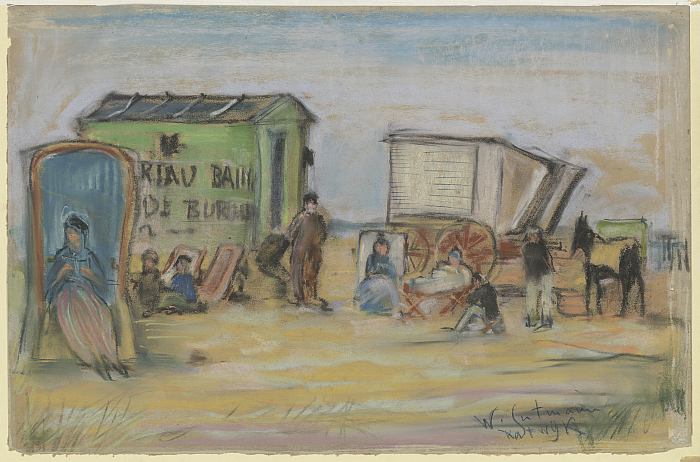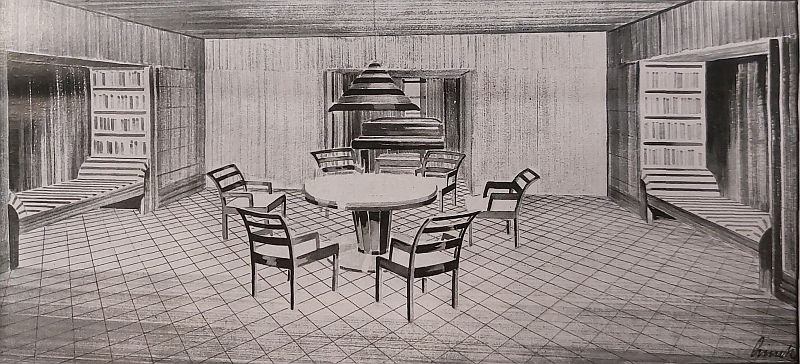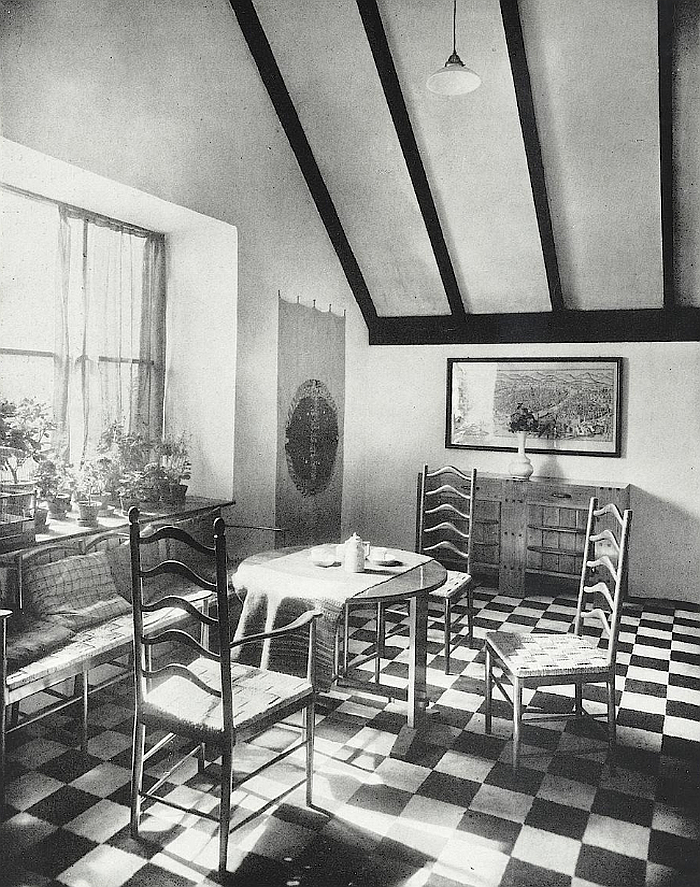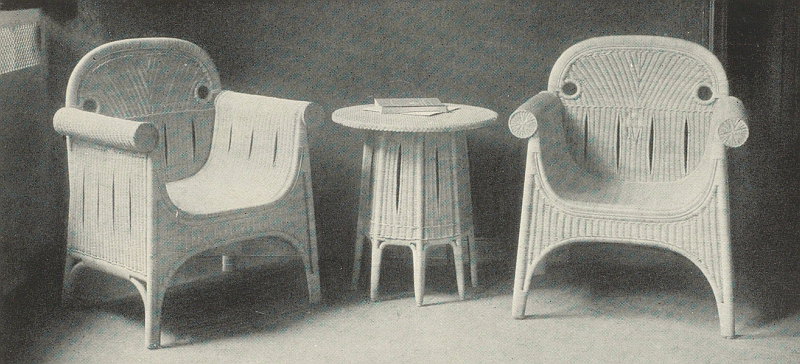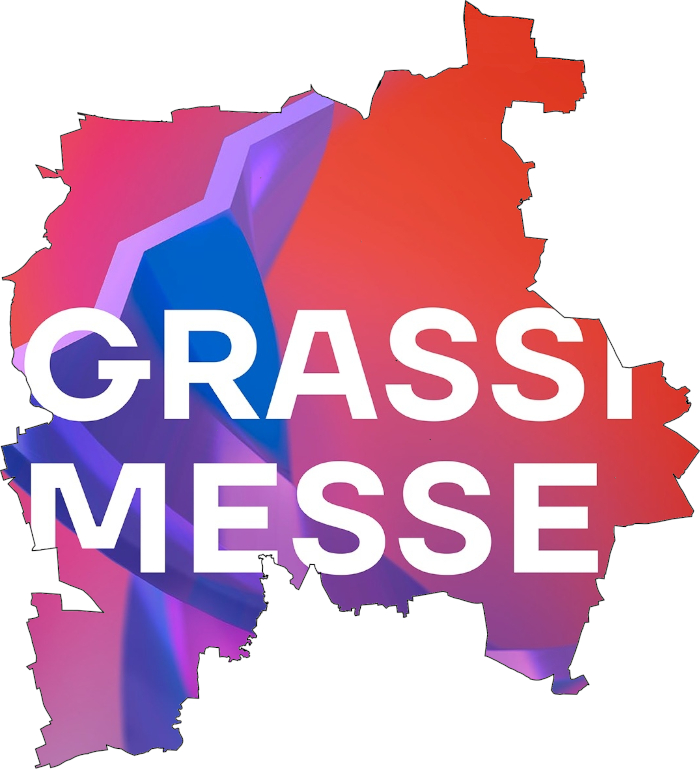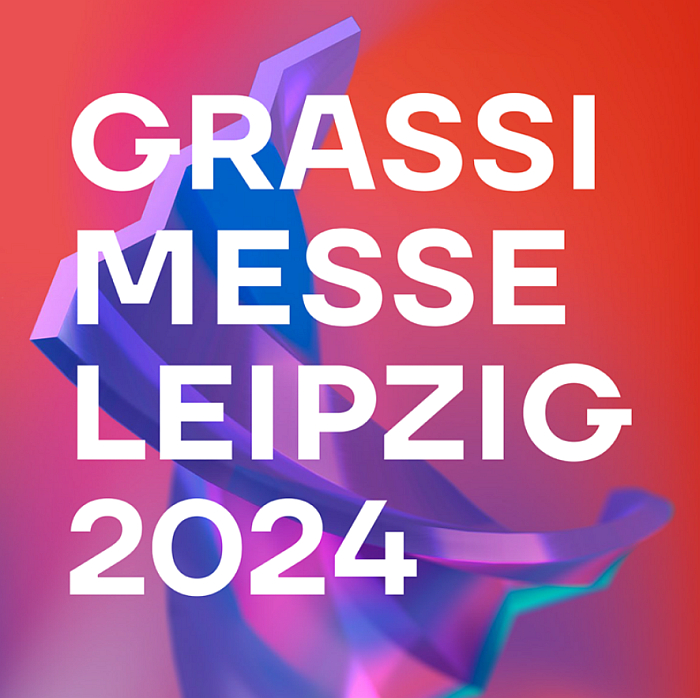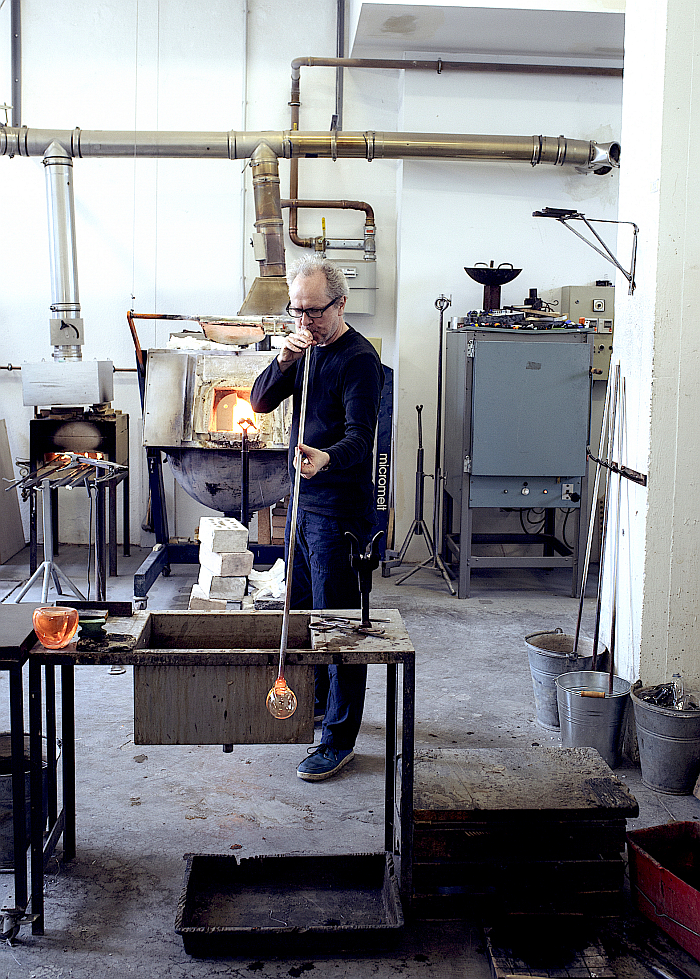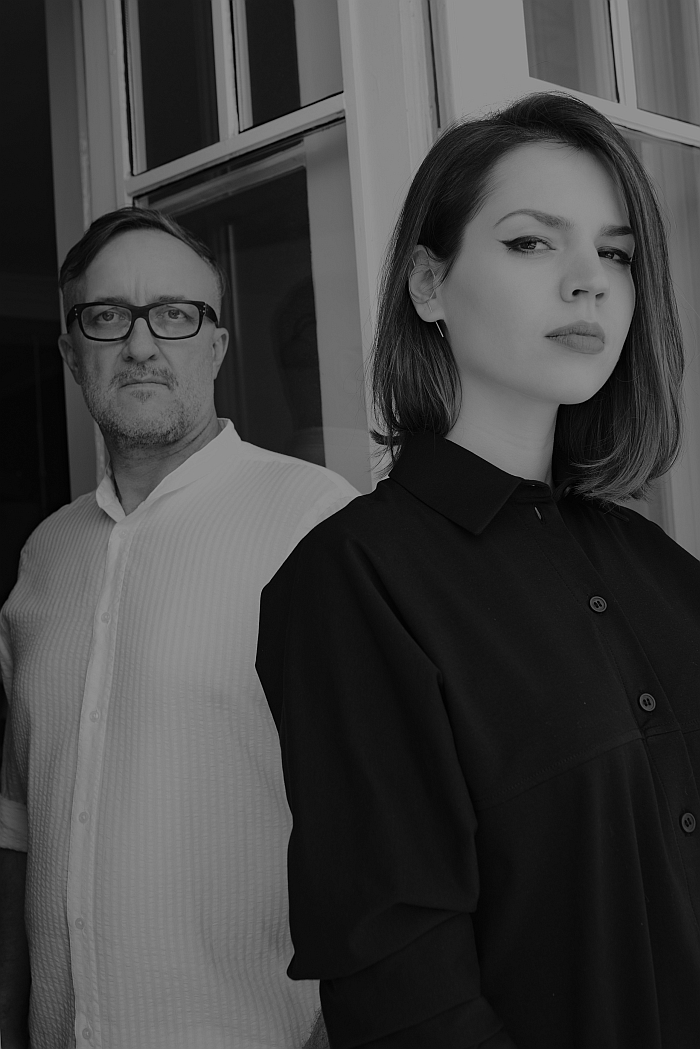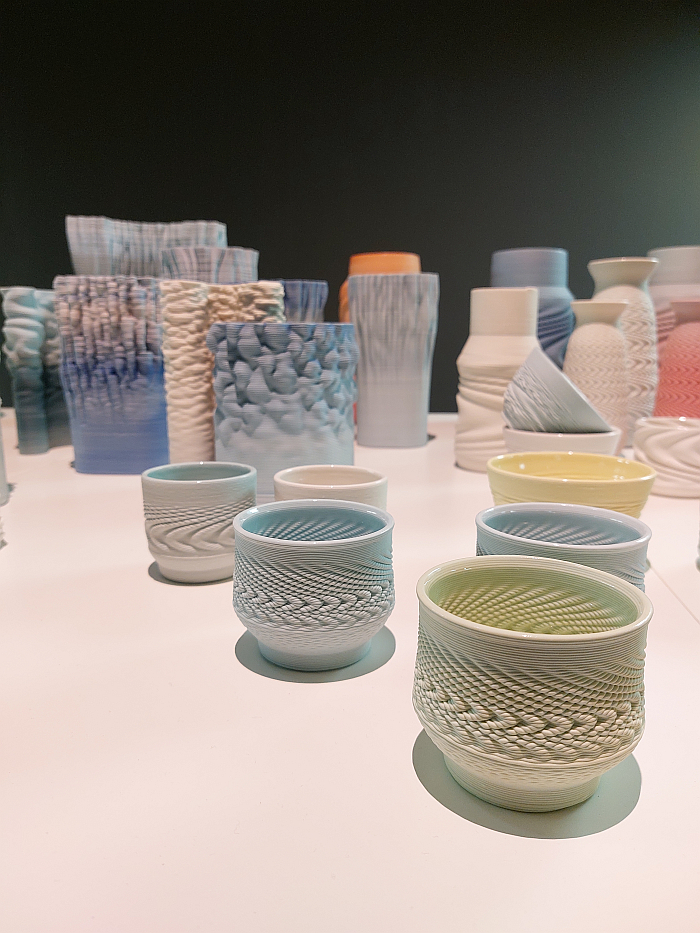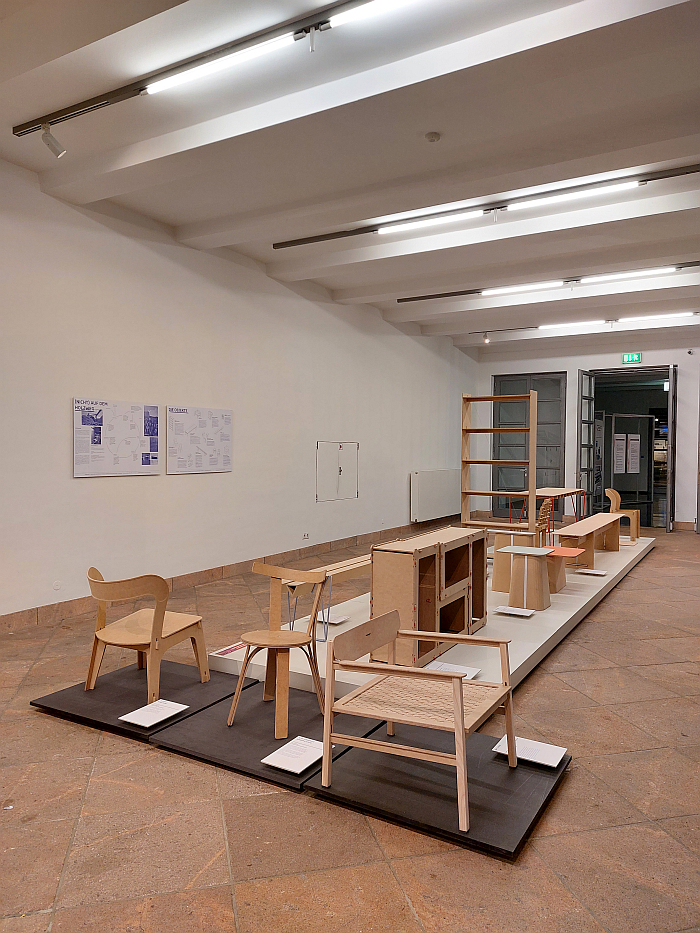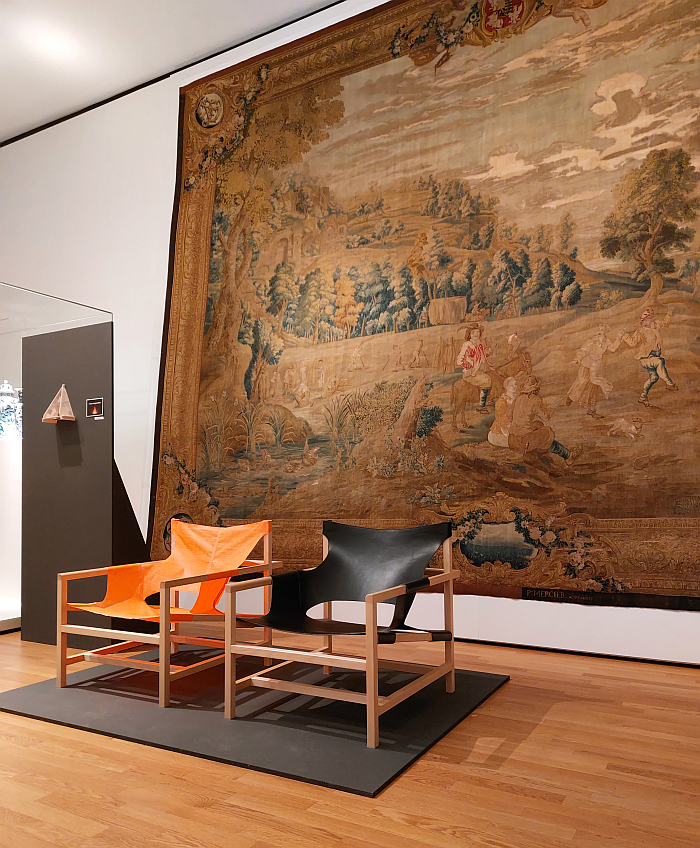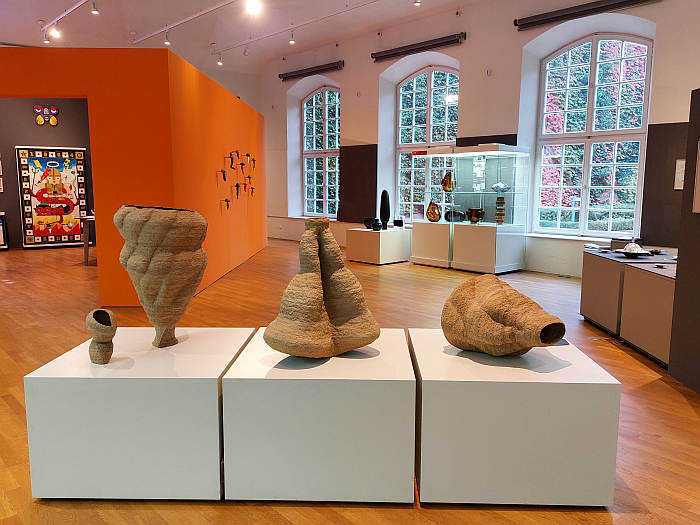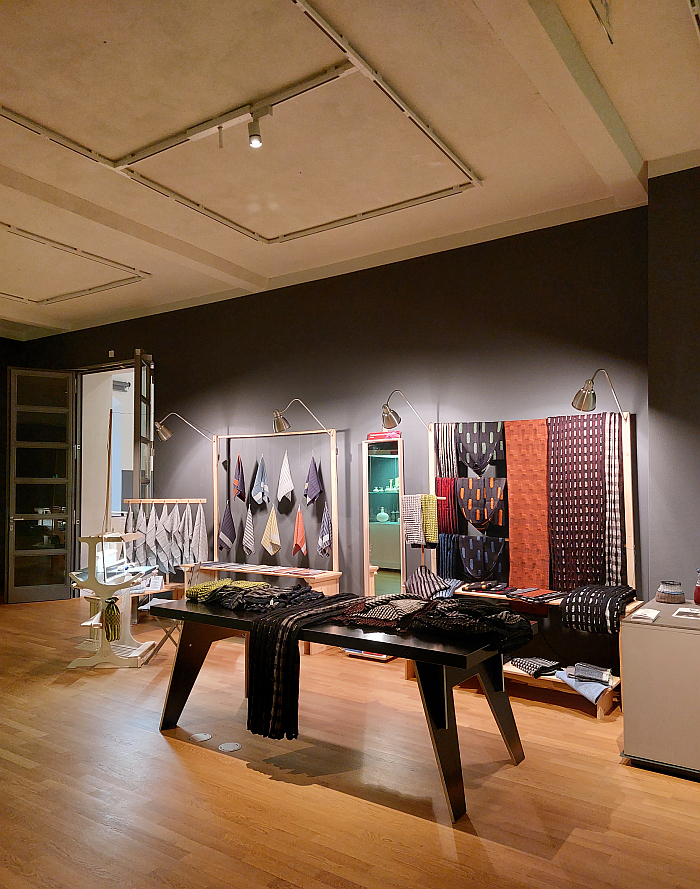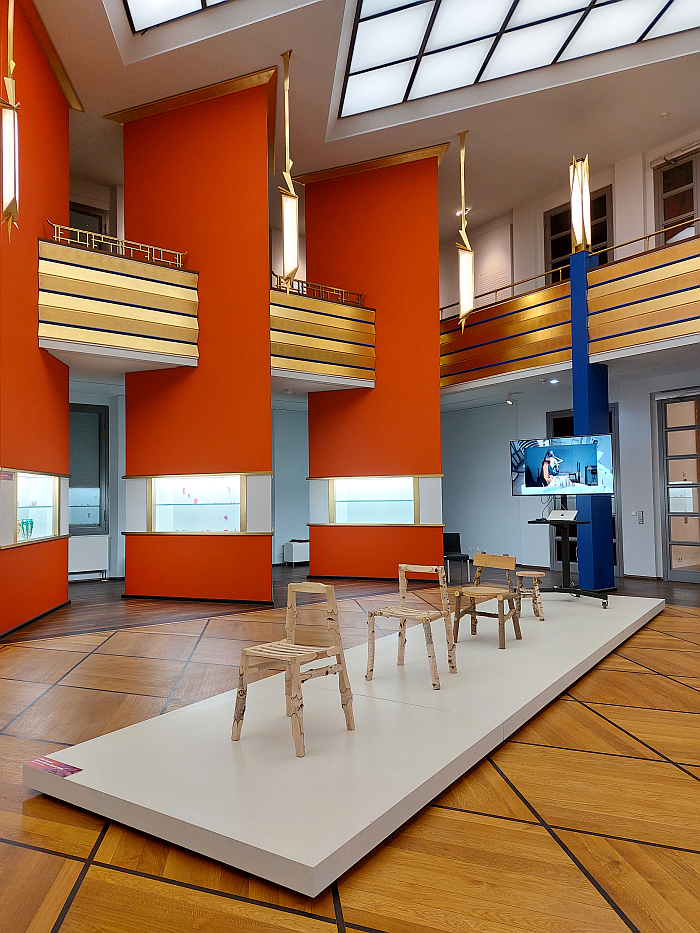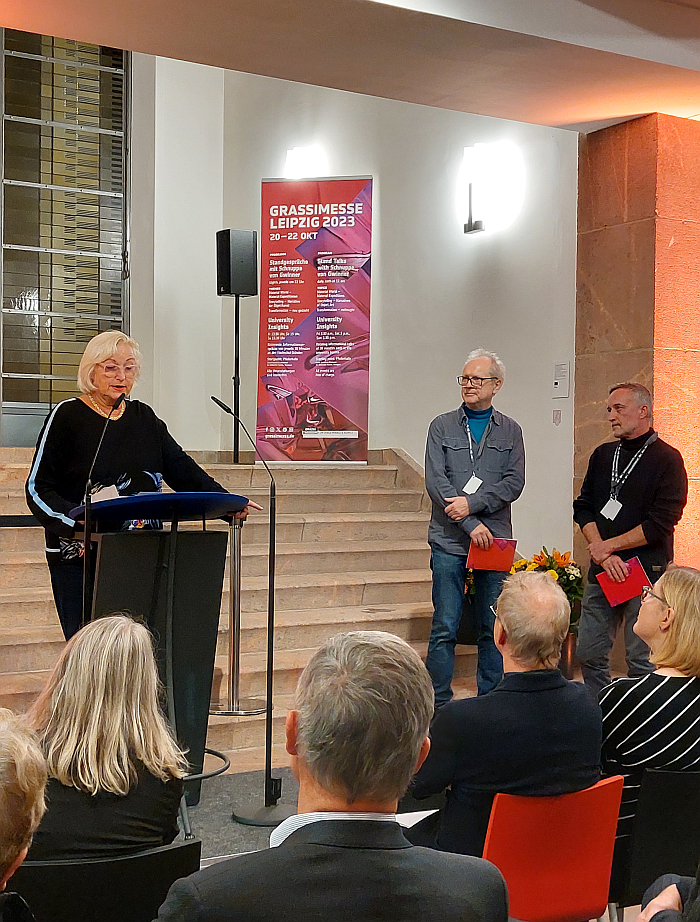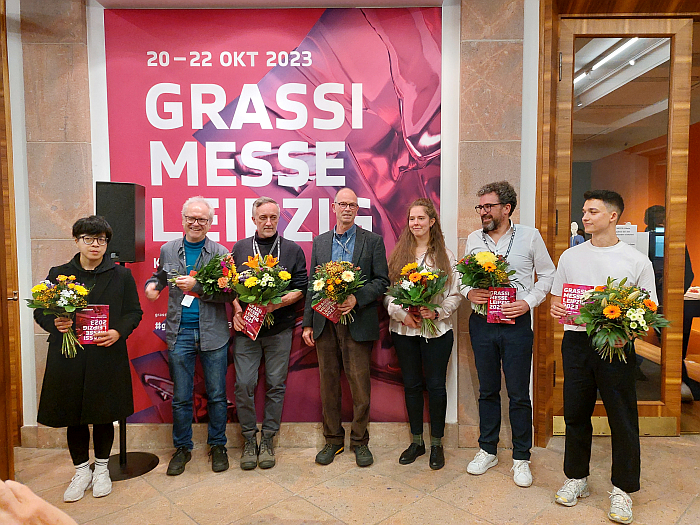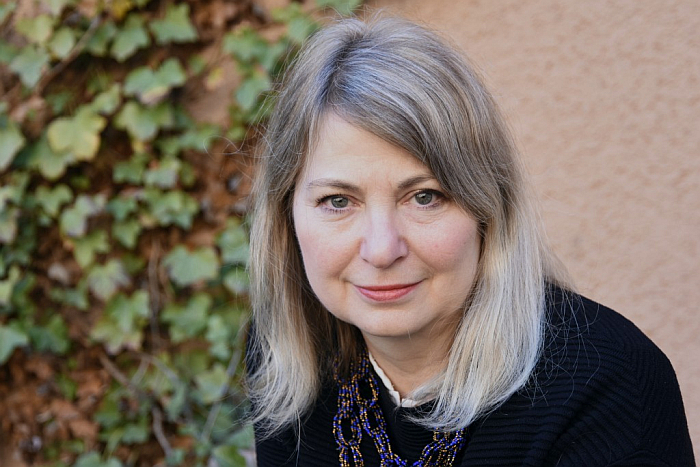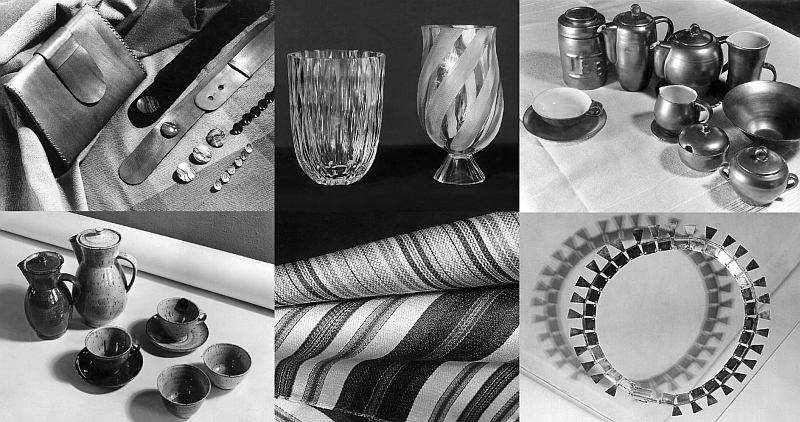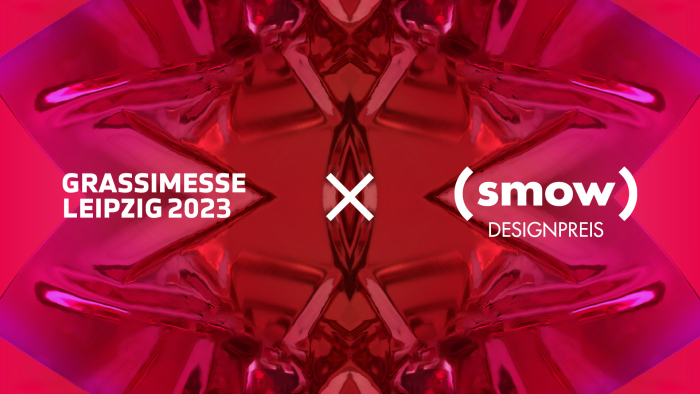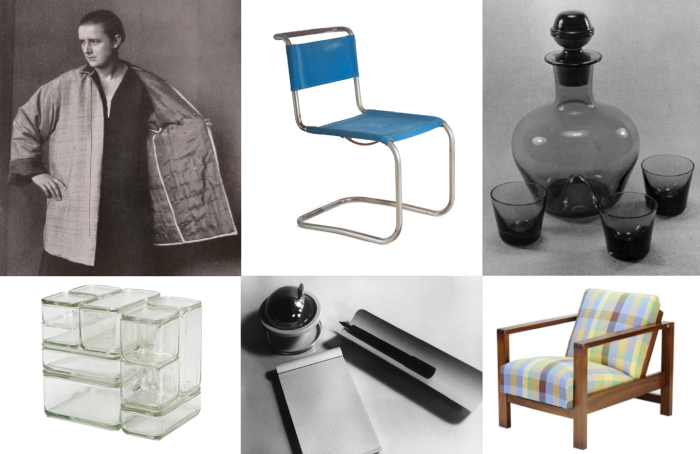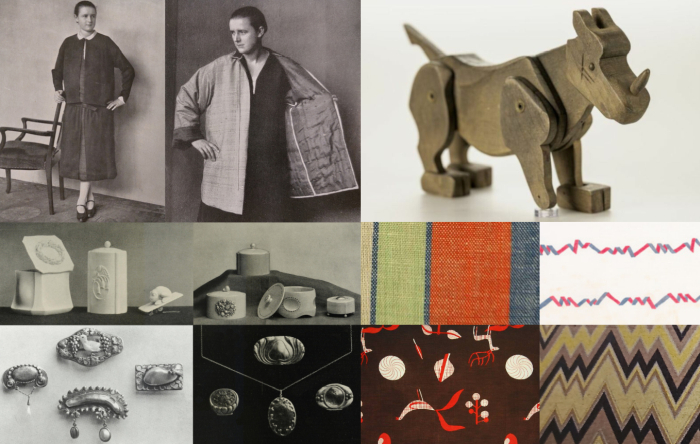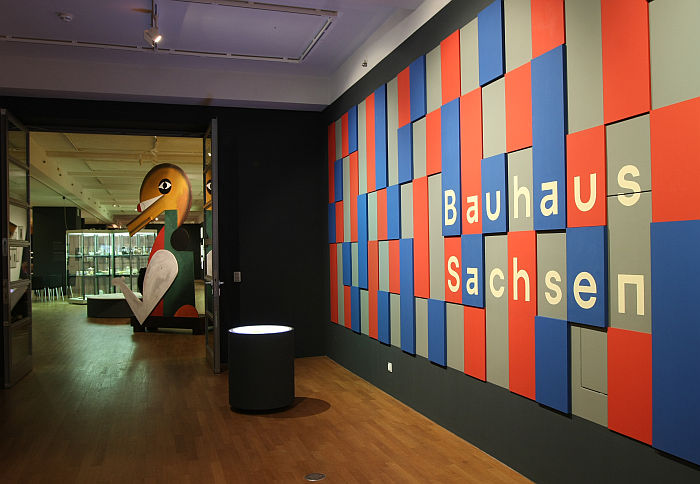Grassimesse 2024: Meet the selected exhibitors…….
While the rest of the international design museum community retreat from the warmth of the summer sun, taking shelter in the cool of their depots and archives, Leipzig’s Grassi Museum für Angewandte Kunst are busy preparing for one of its annual highlights: Grassimesse. A craft, applied art and design fair instigated in 1920 which has witnessed, and survived, the highs and lows of the past century in Leipzig and environs. And which since 1920 has been by invitation only: anyone and everyone can apply, but only those who can convince the international jury of the quality of their work, the conceptual quality, the material quality, the technical quality, et al of their work, are granted access to the institution.
That first Grassimesse jury was populated by the likes of, for example, and amongst many others, Peter Behrens, Walter Gropius, Gerhard Marcks, Josef Hoffmann, Bruno Paul or Richard Riemerschmid1, the 2024 jury featuring in addition to Olaf Thormann, Director of the Grassi Museum and Sabine Epple, Curator of the Museum’s Modern Collection, and since 2000 responsible for the Grassimesse, the likes of, Christianne Weber-Stoeber, the former director of the Deutsches Goldschmiedehaus, Hanau, Chantal Prod’Hom, the former director of the Musée de Design et D’Arts Appliqués Contemporains, mudac, Lausanne, or Toni Piskac, the former Head of Workplace Consulting & Space Planning at Vitra and who now runs the interior architecture practice studio tnpx.
A 2024 Grassimesse jury who recently convened, a 2024 Grassimesse jury who have now passed judgement……
Grassimesse Leipzig 1920, Morschn!
After several years of preparation, and a lot of, at times (very) heated, discussion, this past March saw the staging of the inaugural Grassimesse Leipzig in the city’s Rathaus.
Instigated by Dr. Richard Graul, Director of the Leipzig Kunstgewerbemuseum by way of a response to, an answer to, the increasing concerns amongst many professional creatives regarding the quality of contemporary objects of daily use presented at the bi-annual Leipzig Fair, for all the quality of the novel machine produced goods of contemporary industry, the Grassimesse intends to be not only a platform for presenting the highest quality of contemporary craft, applied art and design, but also to be a platform for exchange and mediation between creatives and industry and commerce, and thereby seeks to help to stimulate an increase in the quality, usefulness, beauty and value for money of the everyday goods of contemporary life.
An important part of the Grassimesse concept is that only works selected by a jury are admitted. Or more accurately, works selected by juries: potential exhibitors at the inaugural Grassimesse were first required to submit their work to a regional jury who, based on the prevailing requirements, made their recommendations to the principle jury who had the final say on who was to be admitted. A principle jury headed by Dr. Graul and including in its number both creatives such as, and amongst others, Peter Behrens, Walter Gropius, Josef Hoffmann or Bernhard Pankok and also representatives of manufacturers and dealers including, for example, Rosenthal porcelain, Selb, Rabe & Co, Bremen, Bruckmann & Söhne, Heilbronn or the Plauen based textile manufacturer Alfred Schönfeld.1 And thus a jury which tends to underscore not only the support Dr. Graul’s initiative has, but also the Grassimesse’s relevance, arguably importance, in context of the contemporary debates of our post-War 1920s.
In the coming days and weeks we’ll bring you some of our thoughts and reflections on some of those selected exhibitors, and of and from Grassimesse 1920 in general.
And for all crafters, applied artists and designers interested in being part of the Grassimesse, in contributing to its (hi)story, and in helping it develop further from its original aims and intentions, helping it remain a relevant and informative and entertaining platform for discussions and discourse on contemporary craft, applied art and design, applications for the 2024 edition can be submitted until Wednesday May 15th.
Whereby, the jury selection process for 2024 is much, much simpler than it was for 1920. If no less strict and demanding and rigorous. And no less important.
Full details, including details of the six Grassi Prizes up for grabs, a sextet that features the €2,500 smow-Designpreis, can be found at www.grassimesse.de
Good Luck!!!
Grassimesse 2024: Call for Entries
As Europe begins to ardently shake of the last remnants of winter and the first green and blue and yellow and white specks appear in parks and gardens, as the chance that summer might just arrive becomes tangible…. October can seem a mighty long way away. Unimaginable. But it is approaching.
As is the 2024 Grassimesse.
The path thereto has been laid and until Wednesday May 15th are all called upon to apply…….
smow Blog Interview: Cornelius Réer – Honing the good ideas so that they result in fantastic products, that’s the task
Born in Coburg, Franken, in 1961 Cornelius Réer took his first steps in the world of glass via an apprenticeship at Glashütte Süßmuth, Immenhausen, near Kassel, followed by periods working in Austria and Sweden and a nine month course at Brierley Hill Glass Center in Dudley, England, before returning to Franken and establishing his own studio in Fürth in 1992. If a return to Franken punctuated by long absences: the next 11 years seeing Cornelius lead an, essentially, nomadic life, travelling Europe and realising his collections in numerous glass studios and presenting/selling them at trade fairs such as Ambiente Frankfurt. Collections whose focus is very much serial production, not the one-offs so often associated with glass; rather serially reproducible forms, albeit series which on account of their artisanal production, Cornelius creating each individual piece himself, means that every object is unique.
In 2003 Cornelius’s nomadicity ended, at least professionally, with a return, full-time, to Fürth, before in 2008 moving his studio down the road Nürnberg, where today he creates series such as, and amongst many others, the Crunch glass collection, one of his longest running series, and, in many regards, his breakthrough series; the InsideOut range, a family of objects composed of a variety of forms that can exist individually or as collective; or the LUMEN2 lantern, Cornelius’s re-imagining and re-working of a late 1950s lantern design by Egon Eiermann. Works defined, and at the risk of summarising more than is prudent, by their colour, by their interplay with light, by their material efficiency and by a functionality that is often simultaneously as playful as it is utilitarian, and as physical as it is immaterial.
And works which since 2023 have also been defined by rising gas prices: a glass studio is dependent on a lot of ovens, a lot of very hot ovens, ovens you can’t turn off, and thus the gas price rises of 2023 saw Cornelius switch from wooden moulds to steel moulds, an alternative production process that not only reduces the energy demand of the production process, but very much defines the character of works such as, for example, the Pool beakers and carafes, or the O.V.A. and MODUL vases. Works that, on account of their genesis in Cornelius’s response to the challenges of rising gas prices, are as much the result of design thinking as of craft thinking, and works which saw Cornelius Réer co-awarded the inaugural smow-Designpreis at Grassimesse 2023 alongside Budapest based design studio Line and Round, I O.
Alongside his own collections Cornelius is also co-author with Laura Jungmann of the project/brand SameSame, a project that began as a component of Laura’s Diploma thesis at the Hochschule für Gestaltung, Karlsruhe, but which has since become autonomous; a project in which industrial glass objects, primarily, wine, beer and water bottles, are upcycled by Cornelius into craft objects that belie their industrial background, and which sees the intended re-use via recycling replaced with re-use via an infinite lifecycle. And just one of several cooperations undertaken over the years by Cornelius with students and professional product designers.
Following his success in Leipzig we met up with Cornelius in his studio in Nürnberg to discuss his work, his approaches, the realities of life as independent glassmaker and glass as a material, but we began asking why glass, why the decision for the glassmakers profession…….
smow Blog Interview: Line and Round – It is a bit of a mission impossible to try to make a career as a furniture designer in Hungary
Line and Round, I O, was established in Budapest in 2017 by Annabella Hevesi, a Masters graduate from the Moholy-Nagy University of Art and Design and Gábor Bella, a Masters graduate from the “School of Life”, with a background in carpentry and numerous years experience in a variety of construction/interior/design fields, including the creation, development and realisation of escape room games, a concept that enjoys a particular popularity in Hungary, and in which context Annabella and Gábor met and began their professional cooperation.
A cooperation that in the six years since it has been staged as Line and Round has seen Annabella and Gábor develop and realise a variety of interior and furniture design projects including, for example, the creation of a locker room and press conference space for the Sopron Basket basketball team, numerous hotel and private interior projects, and the Burnt Geometry collection, Line and Round’s first self-initiated furniture collection, and part of that presentation at the 2023 Grassimesse, Leipzig, that saw Line and Round win the inaugural smow-Designpreis, or more accurately co-win the inaugural smow-Designpreis alongside Nürnberg based glassmaker Cornelius Réer.
Following their success in Leipzig we caught up Annabella and Gábor, virtually, online, to chat about their work, approaches and the realities of life as designers in the contemporary Hungary, but began by asking how Line and Round came to be, how Line and Round liberated itself from the escape room game industry…….
Grassimesse 2023 Compact: Burg Giebichenstein Kunsthochschule Halle – Faserland oder 8mm und 100% Bio
Grassimesse 2023: smow-Designpreis Co-Winners – Annabella Hevesi / Line and Round IO & Cornelius Réer
Let’s be honest, it wouldn’t be smow if it followed the rules and did that which you’d expected it to.
Thus it should have come as absolutely no surprise to anyone that the inaugural Grassimesse smow-Designpreis produced not the expected one, but two, joint, co-winners: Budapest based designer Annabella Hevesi and her studio Line and Round I O and Nürnberg based glassmaker Cornelius Réer…….
Grassimesse 2023: Grassipreis Winners
While in many regards being selected to participate at the Grassimesse can be considered an accolade in itself, the event also awards a number of prizes: some specific, others general, all well worth winning.
Ahead of the opening of the 2023 edition the winners of the seven Grassi Prizes were announced on Thursday evening in the Grassi Museum für Angewandte Kunst, Leipzig.
Selected by the 2023 Grassmesse jury from the 80+ exhibitors, the victorious seven are…….
smow Blog Interview: Sabine Epple – Grassimesse should be a pulse monitor for new tendencies
Arising from the discussions and discourses of the earliest years of the 20th century on the production of, materials of, forms of, and relationships with our objects of daily use in context of the increasing industrialisation of the, then, Germany, and in context of the increasing globalisation of the, then, Europe, the Leipziger Grassimesse1 quickly established itself amongst both avant-gardists and those of a more traditional persuasion, and in doing so became, arguably, one of the more important platforms for a continuation and development of those early 20th century discourses and discussions throughout the 1920s and 30s.
Then, as so oft in the (hi)story of Leipzig, came the NSDAP, then the War and then the DDR, and while events were staged that employed the name ‘Grassi’, the political context, and political interference, of both dictatorships, made and makes them difficult to class as Grassimessen in the sense of the pre-1940s events. And thus the Grassimesse was for a great many years a closed chapter in the (hi)story of creativity, industry and Leipzig before in 1997, the post-DDR Grassi Museum für Angewandte Kunst awoke the Grassimesse from its enforced, and involuntary, slumber.
Since 2000 the Grassimesse has been staged under the direction of Sabine Epple, Curator of the Museum für Angewandte Kunst’s Modern Collection, with whom we met up to discuss the Museum, the Messe, developments since 1997 and also the approaching 2023 edition of the Grassimesse…….
Campus Grassimesse
For all that the annual Leipzig Grassimesse is and always has been as a sales fair, a place to peruse, discourse with and purchase, contemporary craft, applied art and design, and thereby an opportunity to support contemporary craft, applied art and design practitioners, or perhaps more accurately an opportunity to support those practitioners whose practice you most enjoy, it has also always been a platform for creative schools and their students to present their works and approaches and positions; the inaugural Grassimesse in 1920 featuring students from the Staatliche Kunstschule für Textilindustrie Plauen, the Kunstakademie Düsseldorf, the Kunstgewerbeschule Magdeburg, the Kunstgewerbeschule Nürnberg and the Handwerker- und Kunstgewerbeschule Halle, the latter an institution who in their various guises since 1920 have been more or less ever presents at the Grassimesse.
And will be present at the 2023 Grassimesse where, as Burg Giebichenstein Kunsthochschule, Halle, they will present current projects alongside students from the Kunsthochschule Weißensee Berlin, the Universität der Künste Berlin, HAWK Hildesheim, the Hochschule Wismar, the Staatliche Akademie der Bildenden Künste Stuttgart and the Alchimia Contemporary Jewellery School, Florence.
Yet for all that schools have always been a pillar on which the Grassimesse stands, they are one that can be all too easily overlooked amidst the perusing, discoursing and purchasing. Thus ahead of the 2023 edition by way of helping reinforce that the Grassimesse is more than the selected exhibitors and their works, we thought we’d take a brief moment to reflect on some of those schools who’ve graced the halls of the Grassi Museum, and thereby allow for reflections on both the (hi)story of creative education and also on the Grassimesse as a platform for schools and a coming generation of creatives as much as one for those creatives currently practising…….
Grassimesse 2023: Meet the selected exhibitors…….
Unlike a great many international craft, applied art and design fairs, entry to the annual Grassimesse Leipzig is strictly by jury selection. And has been since the first edition in 1920. ’twas, in many regards, one of the pillars on which the event established its reputation. And one which helps it maintain that reputation.
The 2023 Grassimesse jury recently convened to review the abundance of applications for this year’s edition, up some 33% on 2022, and, and perhaps more satisfyingly, featuring applications from creatives in 13 countries, an indication of the event’s ongoing international appeal and relevance, from whom they selected 82 exhibitors representing a wide spectrum of craft, applied art and design genres, from jewellery to furniture, from glass to toys, from millinery to ceramics and beyond; including 18 international exhibitors from Italy, Sweden, Hungary, Austria and the Netherlands.
All 82 of whom will assemble in the Grassi Museum für Angewandte Kunst, Leipzig, in late October.
And all 82 of whom are in with an equal chance of picking up the €2,500 Grassimesse smow-Designpreis.
Who that is, who will go down in history as the inaugural winner of the Grassimesse smow-Designpreis, will be decided by the international jury on Thursday October 19th.
Watch this space!!!
Until then you can peruse the exhibitors/candidates at www.grassimesse.de and select your favourite, and/or find your new favourite creative. Or perchance find several convincing arguments to enjoy a late October weekend in Leipzig yourself…….
The Grassimesse smow-Designpreis – Don’t miss out like Reich, Wagenfeld, László, Brandt et al
Although the Grassimesse has been staged, with readily understandable pauses, since 1920, the Grassimesse smow-Designpreis is being staged for the first time in 2023.
Which means a highly impressive roster of innovative, intelligent, imaginative, informative, designers from back in the day can’t win it. Have, if one so will, missed out
But you can win it and the associated €2,500.
Or can if your reading this before Friday May 12th Sunday May 21st, the new extended, deadline for entries.
Otherwise you’ve also missed out.
You’ve now missed out.
Putting you in an illustrious, if very unfortunate, group along with the likes of…….
The Grassimesse smow-Designpreis 1923: A Fantasy Shortlist
The 2023 edition of the Grassimesse Leipzig will see the inaugural awarding of the €2,500 smow-Designpreis. The first dedicated design prize in the institution’s long (hi)story. Entries are were open until Friday May 12th.
But what if that first Grassimesse smow-Designpreis had been awarded not in 2023, but 1923?
Who might have won?
Who would the 1923 Grassimesse jury have selected from the many possible candidates?
????
A smow Blog fantasy final four…….
The Grassimesse smow-Designpreis 2023: Call for Entries
For the first time in its long and illustrious history Leipzig’s Grassimesse will award a dedicated design prize at its 2023 edition.
More specifically, will award the €2,500 smow-Designpreis.
The call for entries is now open, and you are all cordially invited closed…….
Bauhaus_Sachsen @ Grassi Museum für Angewandte Kunst, Leipzig
When one considers the, let’s say, unique, derisive, unalluring place the Sächsisch dialect enjoys endures amongst German speakers, it could be considered unwise, foolhardy, to explore all too deeply the contributions made by creatives and industry in and from the State of Sachsen to the development of Bauhaus, to explore, if you will, Bauhaus’s Sächsisch accent.
With the exhibition Bauhaus_Sachsen the Grassi Museum für Angewandte Kunst Leipzig do just that…….
Grassimesse Leipzig 2014
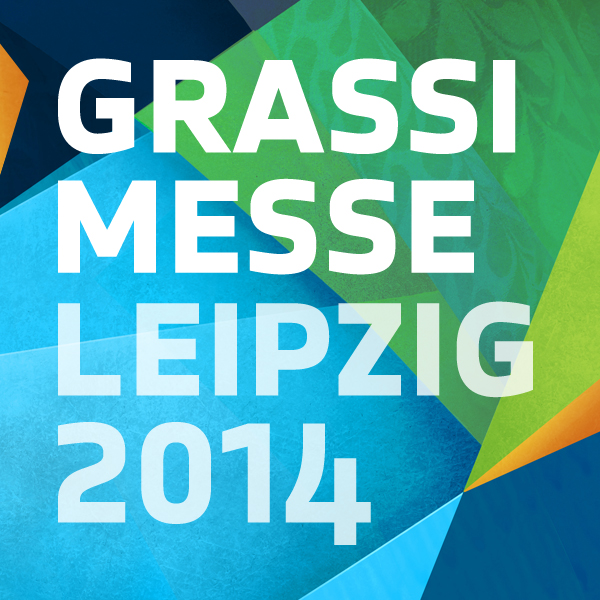
Time was when Leipzig hosted two fayres per year, one at Easter and one at Michaelmas. The Easter Fair has

